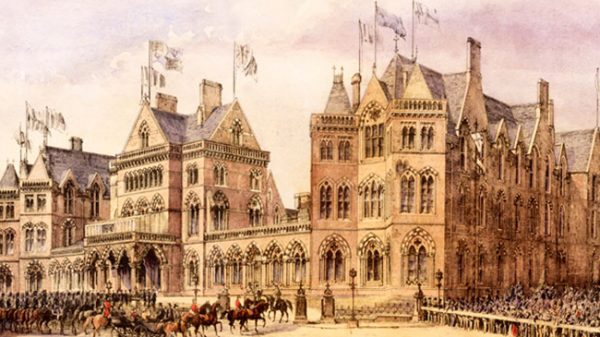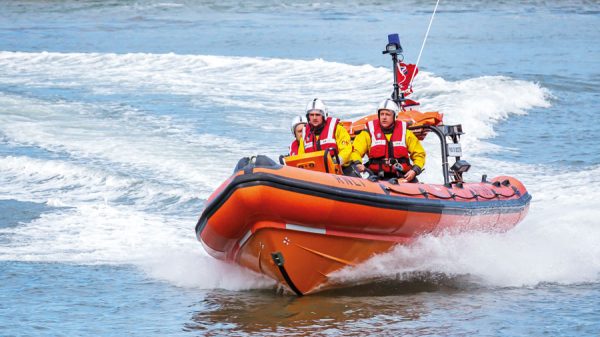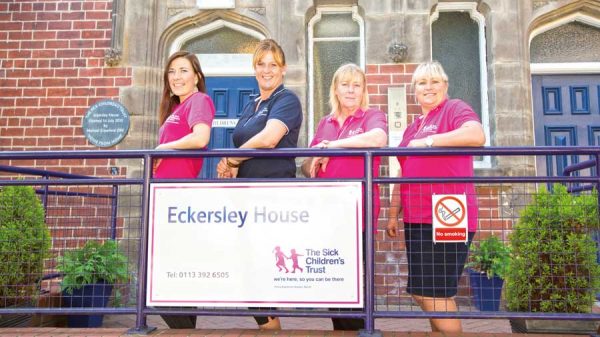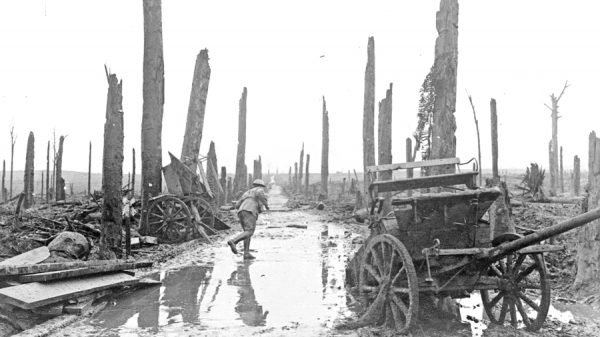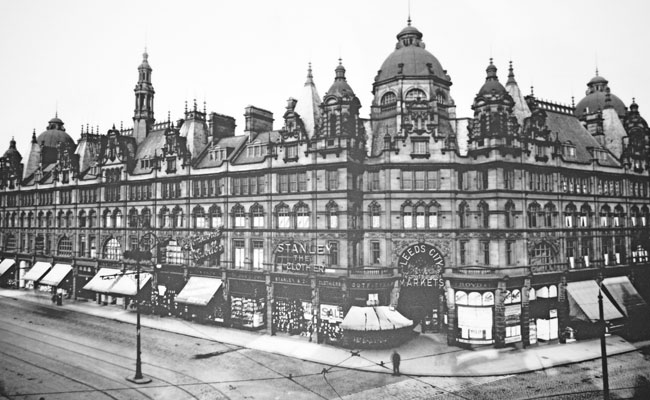−−− BY LINZI DAVIES −−−
After a long winter trapped indoors, lockdowns and then torrential downpours just as restrictions eased, hopefully this month brings warmer, sunnier weather along with the first day of summer on the 20th. Holidays abroad are still very much a roll of the dice with the traffic light system so many are choosing ‘staycations’ and long weekends or days out instead.
With all the beautiful places and great attractions to visit right here in Britain, the only thing not guaranteed is the weather! Whilst hopefully lots of people holidaying in the UK will bring a much-needed boost to the economy and businesses who have lost a fortune over the last 12 months, it will inevitably mean far busier roads and destinations.
This unfortunately can lead to more accidents and one charity that may mean the difference between life and death in such circumstances is the Yorkshire Air Ambulance. In this month’s feature we look at how the charity began, the important work that YAA does and the heroes who save lives each and every day.
History Of The YAA
Yorkshire Air Ambulance was founded on the 25th October 2000 with a small crew operating a leased Bolkow helicopter out of a portacabin at Leeds Bradford Airport. Four years later they moved into a new office space at the airport and income had increased to just over £1million.
In 2006 YAA hit the headlines when Top Gear star Richard Hammond was involved in a serious car crash at Elvington Airfield near York whilst driving a dragster. He was airlifted to the LGI where he received treatment and thankfully made a full recovery. This accident raised awareness of the charity and a high-profile appeal was launched.
Richard Hammond was also the presenter of the programme that followed in 2007 called Helicopter Heroes which first aired on 3rd September. It was initially set for 10 episodes but was such a success that further series were recommissioned. In 2008 a second helicopter was added to the fleet, based at Sheffield Business Park.
In 2012 HRH The Duke of York officially opened Yorkshire Air Ambulance’s new northern airbase at RAF Topcliffe near Thirsk, and the following year they moved from Leeds Bradford Airport to Nostell Priory in Wakefield. This new flagship airbase was purposely developed specially for the operations, and between the two new bases meant that most people in Yorkshire were within a 20-minute flight from the helicopters. By October 2015, the Yorkshire Air Ambulance had carried over 6000 patients over a 15-year period.
2016 was an important year for the charity as they welcomed two new state of the art helicopters to replace their aging models. Two Airbus H145’s were delivered, one at each airbase and a grand unveiling event was held at Nostell on the 7th June. Both helicopters offer crew much more advanced technology, a larger cabin area and a bespoke medical fit out for use by the critical care team.
Key medical and operational advancements in 2017 enabled the charity to help even more patients such as the commencement of Night Vision, meaning they could now fly in darkness. They also began carrying blood on board to deliver vital transfusions to critically injured patients at the scene of an incident or in the air.
The Crew
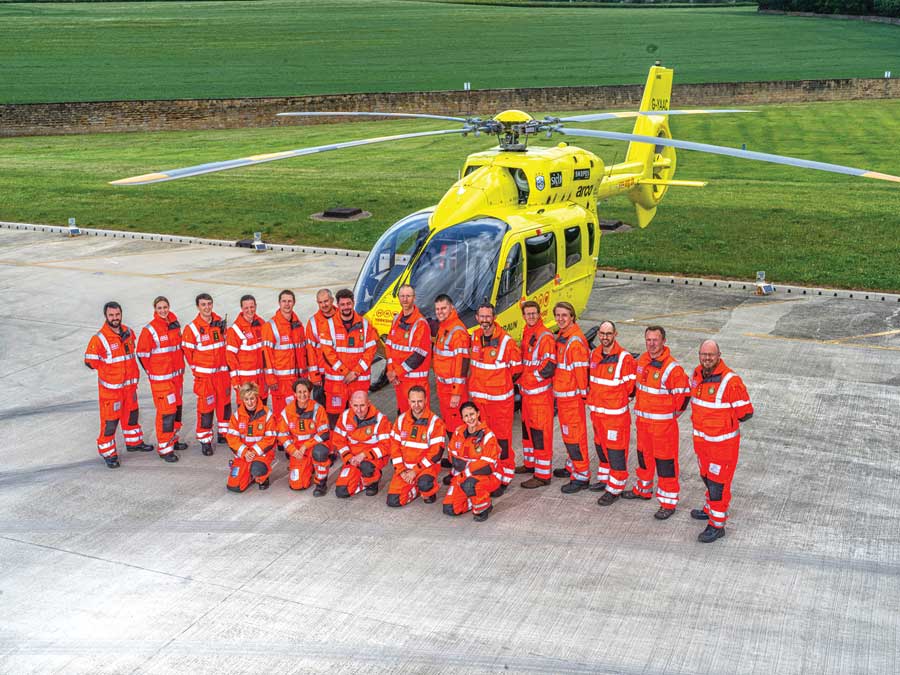
The Yorkshire Air Ambulance fly daily with a crew consisting of a highly trained pilot and two critical care paramedics. The Nostell helicopter also has onboard a critical care consultant with A&E experience and anaesthesia specialism. The dedicated dispatch desk is manned by one of the paramedics to ensure the ambulances are sent to the most urgent incidents across the county.
The whole team comprises of 11 consultants and 20 paramedics who between them work 365 days a year. The paramedics are seconded on a two-year basis from the Yorkshire Ambulance Service NHS Trust. Four of the latest recruits to YAA spoke recently about their experiences working for the air ambulance charity.
Steven Dawber
Steven, from Brough started his medical career in 2002 working on patient transport and sat his paramedic exams in 2008. He has mainly worked in Hull where he also became a Clinical Supervisor in 2013 and was seconded to the post of Clinical Development Manager before joining the YAA.
He said, “I had reached a point in my career where I wanted to challenge myself again and go to jobs where I could learn more skills and push myself. Working at YAA offers a different method of transport, different skills and medication, and most importantly, you can make a difference to someone’s life. I saw this on my first week of work here, where a journey by land would have taken 40 minutes, but it took just 4 minutes by air.”
Gemma Richmond
Gemma joined Yorkshire Ambulance Service in 2002 as a Technician and worked at Menston Ambulance Station until she was offered a position at HART, Yorkshire’s Hazardous Area Response Team. She completed her paramedic training there.
Gemma said, “I really wanted the opportunity to experience life as a HEMS Paramedic. I spent eight years working across Yorkshire providing a HART response, so now is a really exciting opportunity to provide a similar response but arriving to the emergency in a completely different way and providing my patients with a wider variety of clinical skills. I am really enjoying working alongside the doctors providing a critical care response to the patients in the greatest need and I’m looking forward to learning a huge amount from the doctor’s experience in pre-hospital care over the next two years.
Georgina Godfrey
Georgina, from Sheffield began working life as a dental nurse before pursuing her ambition of working in medicine, which stemmed from a serious fall she suffered when she was younger and was inspired by the medical team who helped her. She qualified as a paramedic at the age of 21, graduating from Sheffield Hallam University.
She said, “I’ve worked alongside Yorkshire Air Ambulance many times in my role at Yorkshire Ambulance Service and I’ve always been impressed by their teamwork and their care for their patients.”
Mike Williams
Following seven years in the army, Mike joined the Yorkshire Ambulance Service in 2009. He was originally based in Harrogate as a paramedic before moving to Leeds as a clinical supervisor.
Mike said, “Being based in rural North Yorkshire, we often encountered Yorkshire Air Ambulance on jobs and working for them has always been something that I wanted to do. I’m really enjoying getting out their and putting all the training into practice, whilst learning from all the YAA doctors, paramedics, and pilots.
The Patients
Many of the patients who require the YAA are casualties of road traffic accidents, or in a rural area where it would take a long time for a road ambulance to reach them. When critically injured, every minute really does count and getting vital treatment from highly trained medical professionals at the scene quickly, and swift transfer to hospital can mean the difference between life and death.
One such patient who was helped by the Yorkshire Air Ambulance was Aaron Hill, a bus driver from York. He was driving to work in his vintage Jaguar when the car skidded in wet weather and careered off the road into a ditch.
The impact of the crash shattered both his thighs and trapped his legs in the mangled vehicle. Emergency personnel had to work against the clock to get him out and they feared he would lose both his legs. Brian White, YAA HEMS Doctor who attended even though he was off duty said, “When I got there, it wasn’t carnage, but you could see the huge amount of energy being transferred into this car which was deformed. It was lying on its side and the gulley to access it was very difficult. Having a look in, I couldn’t see where his legs were going. The gearbox seemed to be moulded around them. The longer he was trapped, the more concerned I was getting. He wasn’t bleeding torrentially, but a slow bleed could have still translated into Aaron suffering a cardiac arrest.”
Aaron was trapped for several hours before being extracted by the Fire Service. He was then flown to the LGI, where it was established he had broken his thigh bone, a vertebra in his spine and sustained neck and skull fractures.
Aaron said of his injuries, “the road to recovery was long and rough. I was in Leeds General Infirmary for around a month and I was told that I would be bed bound for nearly a year and I just wouldn’t have it, so I got myself a wheelchair and started moving as much as I could. The lower half of my leg was partially severed. The doctors made a big effort to save as much as they could, but after a couple of days, they said they would have to start operating. I made the decision to lose my foot because I was told by a lot of experts that it would be very specialised to have a prosthesis made up for just a small portion of my foot. I just said take everything off so I can get back to normal as quick as I can.”
Defying medics, Aaron has now learned to walk again, drive again and is even back to work as a bus driver. Speaking of how the YAA helped save him, he said, “Easingwold was part of my bus route and I used to see bucket collections for the YAA and spare the change from my lunch. Little did I know that I would need them in the near future. It must have been a horrible day for them. They turned up and made some very difficult decisions, but I’m here today. I have a huge amount of respect for the emergency services. You never realise how much you need them until you have an incident.”
Another patient who was in desperate need of the YAA was Algy Kazlauciunas. He was cycling in Nidderdale, North Yorkshire last September when his bike wheel skidded on an oil slick in the middle of the road and his body was thrown on to a grass verge. He remembers, “it was one of the most unfortunate things that has happened in my life. An old truck had disposed of oil on the road, and I hit the oil and that was it, I had no chance. I immediately realised that I couldn’t move and that no-one was there to help me.”
Luckily for Algy, two other cyclists were not far behind and they stopped to offer him their assistance. They called an ambulance but were struggling to work out their exact location. One of the cyclists had the What3Words app installed on their phone and were able to use it to help the emergency services pinpoint their location within a three-metre square. Due to the severity of his injury, and the rural location, the Air Ambulance was dispatched.
Algy says, “I remember the helicopter arriving and landing in the field, and I wasn’t on the ground for too long before they took me to hospital. I was impressed by the people who stopped and were so helpful with everything, it was a real joy in terms of humanity.”
At Harrogate Hospital he endured a long operation to pin his fractured femur back together and have a rod inserted. Algy spent four days in hospital before being sent home to recuperate. Unfortunately, he hasn’t been able to get back outdoors on his bike yet but is cycling in his garage, training his body for when he can.
Supporting The Yorkshire Air Ambulance
Like many charities across the UK, the YAA has been hit hard by the COVID-19 pandemic. Despite a difficult 2020, last October they celebrated 20 years of saving lives across Yorkshire, having flown more than 8000 patients to major trauma centres for treatment. To keep both of Yorkshire’s Air Ambulances maintained and in the air, the YAA needs to raise £12,000 every single day – the equivalent of £4.4m a year.
They serve 5 million people across 4 million acres of Yorkshire, attending well over 1500 incidents a year, an average of 4 every day!
They raise these funds in a variety of ways. Events such as the upcoming Total Warrior 2021 taking place next month are fun for people to participate in, testing their fitness, skills and endurance all in exchange for sponsorship from their friends and family. Individuals can choose to fundraise with a challenge of their own, and you can also donate via their website or leave a gift in your will.
Volunteers are often the lifeblood of the charity, raising awareness, collecting donations in tins, and making sure that every penny counts. Volunteering roles are very flexible, and you can choose to volunteer regularly or on an occasional basis to suit your availability. To register your interest in volunteering for the Yorkshire Air Ambulance, visit:
www.yorkshireairambulance.org.uk/volunteer-for-us/register-your-interest
For more information or to make a donation, visit:
